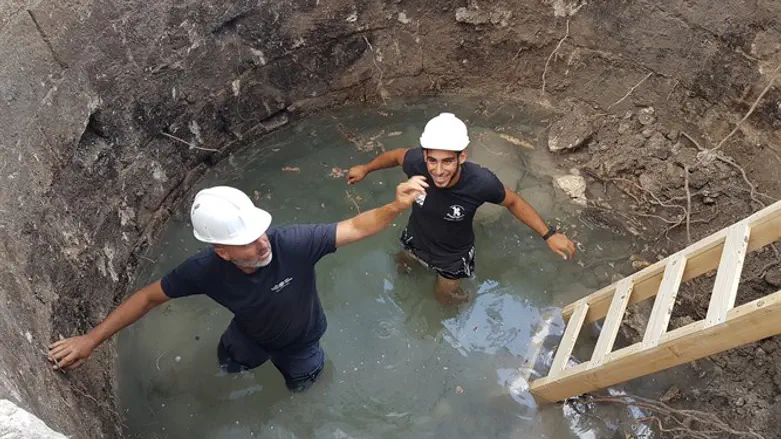
During construction work north of Ramat Beit Shemesh's main entrance on Route 38, the Israel Antiquities Authority (IAA) discovered a well from the Ottoman period, with a complex water system beside it.
The discovery was made during the IAA's "inheritance" program, which allows pre-army teens to participate in the archaeological excavations.
The well is 11.48 feet (3.5 meters) in diameter, and is deep enough to reach the groundwater which, today, is 6.56 feet (2 meters) below ground.
Next to the well is a domed underground opening, which served to store the accumulated water.
The domed opening is the first of its kind to be found in Judea.
Several other wells have been found along Route 38. Most of these are easily visible, thanks to the palm trees and other plants growing nearby, fed by the wells' waters. These scenes help preserve history, and show us what it used to look like in Judea's hills and valleys.
According to IAA Evacuations Director Michal Heber, "Route 38 connects Shaar Hagai and Beit Guvrin, and serves as one of the country's main highways. It's basically a north-south corridor - and that's what it was during many periods of Israel's history."
"Generations of sites were built along this road - monasteries, villages, farms, and there were roadside stops as well.
"We believe the various wells we found belong to different periods, and were intended to provide for the needs of travelers and residents alike. The residents worked to preserve the wells, since they were the only sources of fresh water, and used complex engineering to ensure the wells did not dry up."
According to IAA Judea Division archaeologist Amit Shedman, the discovery of the well means construction of the road will be more complicated than expected, and authorities will need to find a way to preserve and hopefully develop the site.